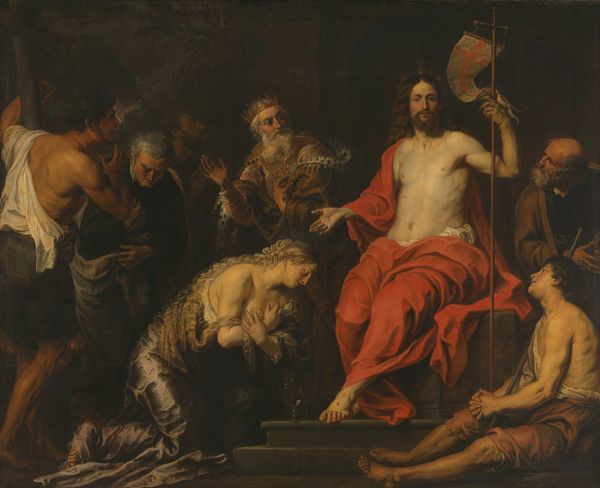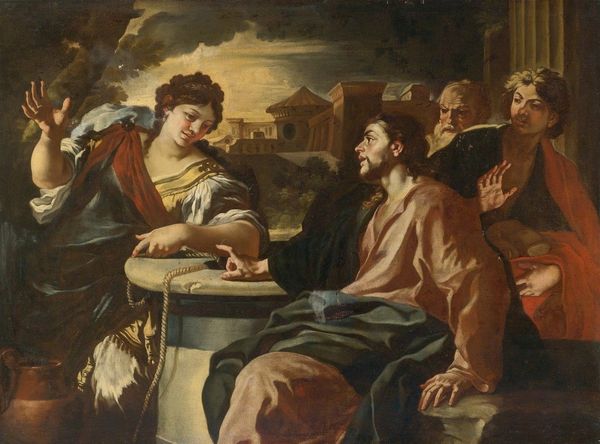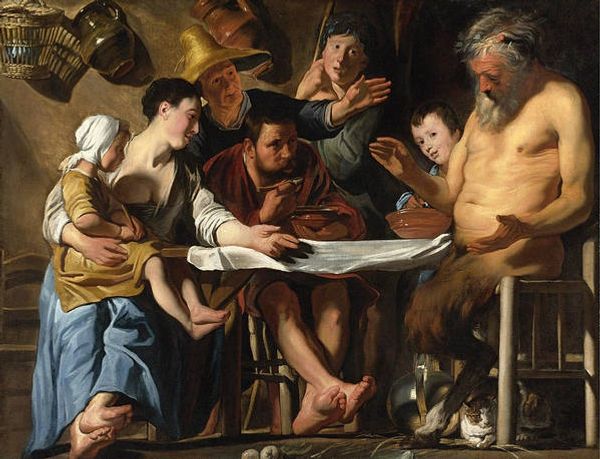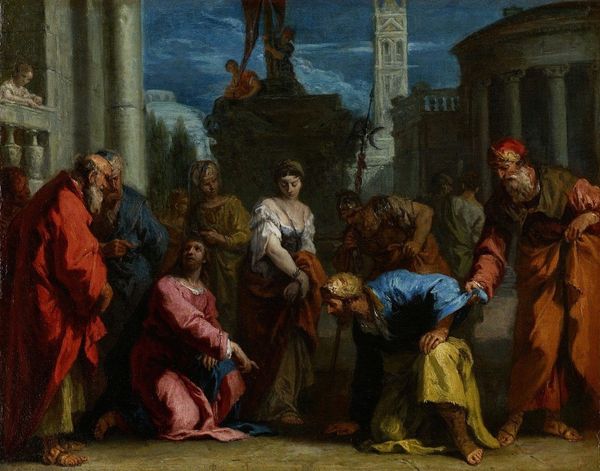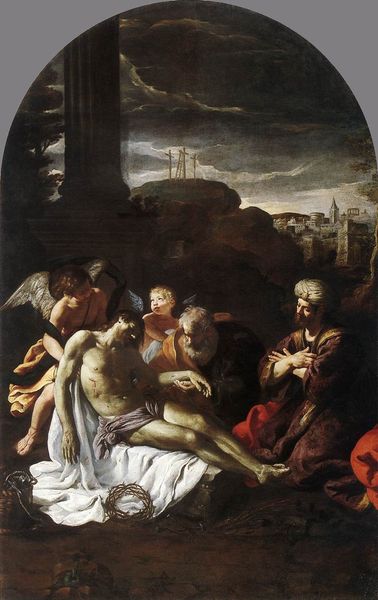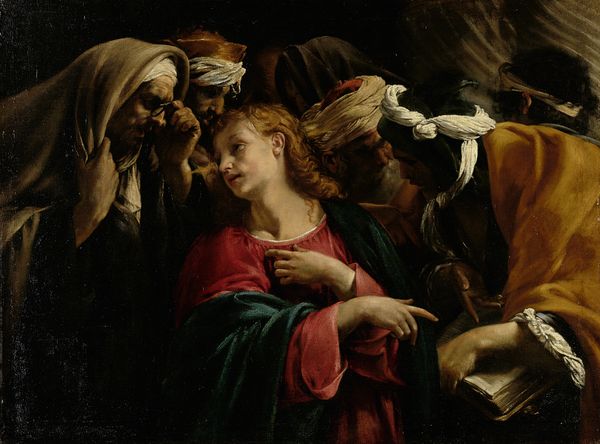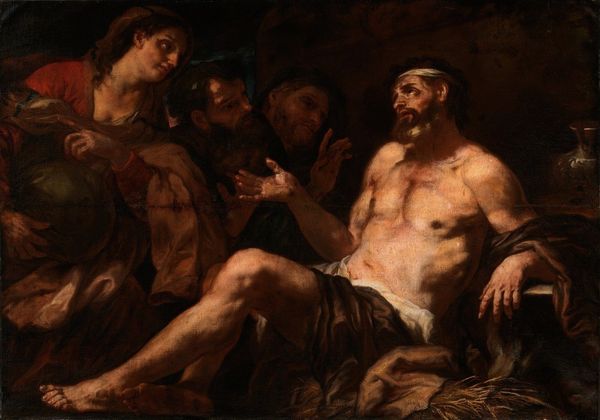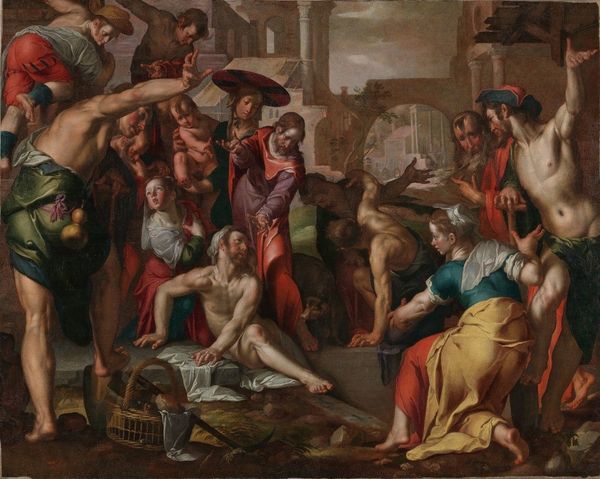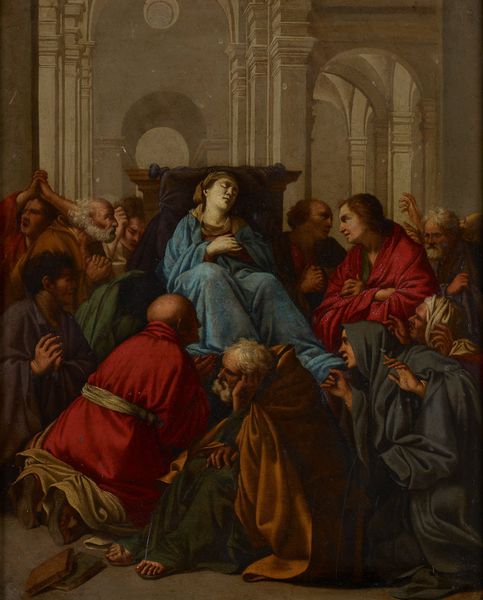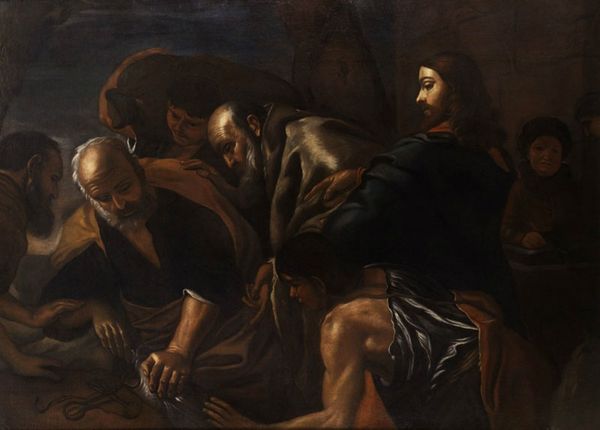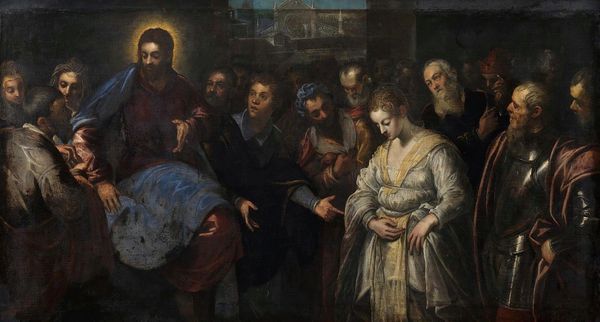
painting, oil-paint
#
narrative-art
#
baroque
#
painting
#
oil-paint
#
figuration
#
chiaroscuro
#
history-painting
#
italian-renaissance
Copyright: Public Domain: Artvee
Editor: We're looking at Luca Giordano's "Christ and the Adulteress," an oil painting that uses a really dramatic chiaroscuro effect. The expressions on everyone's faces are captivating! How do you interpret this work, especially given its clear manipulation of light? Curator: From a materialist perspective, it's crucial to consider how the cost and availability of oil paints, particularly pigments like ultramarine used for Christ’s robes, would have affected production. The Baroque emphasis on dramatic lighting—the very *substance* of chiaroscuro—wasn't just aesthetic, it required skilled labor to grind and mix pigments, layering glazes. Think about the socioeconomic implications of access to such techniques and materials; what do the lavish use of material and technical process signal in the painting itself? Editor: That's a great point! I hadn't considered the cost of those materials. So the painting becomes a statement about patronage, essentially? Someone had to fund Giordano's access to the materials and his skill to use them to produce the work? Curator: Exactly! And it begs the question: how does the painting's *ostentatious display* of skill and material richness affect our understanding of the biblical story it depicts? Doesn’t it introduce a tension between the message of humility and the spectacle of its artistic execution, becoming itself a commodity, meant to impress? Is this tension accidental or does it critique established means of displaying religious narrative in paint and stone? Editor: That's really given me something to think about, questioning how the materials and production processes add layers of meaning! Curator: Yes, shifting the focus from pure aesthetic appreciation to the socio-economic context illuminates power dynamics inherent in artistic creation.
Comments
No comments
Be the first to comment and join the conversation on the ultimate creative platform.

